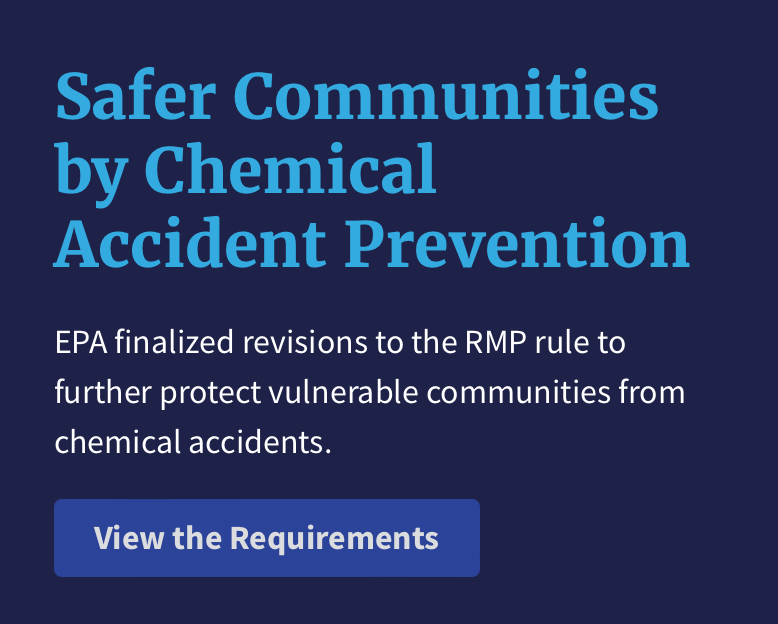EPA RMP – Risk Management Plan Revisions Released

First, a Link to the Rule
I had difficulty finding the new rule’s actual wording, but I think I found it HERE.
But in that document, it says:
“This is a prepublication version of a final rule that was signed on
February 27, 2024. The final rule is pending publication in the
Federal Register. Although EPA has taken steps to ensure the
accuracy of this prepublication version, it is not the official version.”
So, you can wait for the Federal Register to catch up or trust the “prepublication” version.
Root Cause Analysis Requirements
Definition of a “Root Cause”
First, the EPA adopted the Chemical Safety Board’s definition of a root cause:
“Root cause will be defined as a fundamental, underlying,
system-related reason why an incident occurred that identifies
a correctable failure(s) in management systems and,
if applicable, in process design.”
I don’t think this definition is very helpful. If you want to read about our history of developing the definition of a root cause, CLICK HERE.
Recognized Method
The EPA is requiring:
“…that root causes must be determined through the use of
a recognized method. The final rule will allow the owner or
operator to determine root causes using a “recognized method”
that is appropriate for their facility and circumstance.”
This leaves picking a recognized method up to the “owner/operator.” This is good because good owners/operators can pick TapRooT® Root Cause Analysis (either in the simple form or the complete form, depending on the seriousness/complexity of the incident) as their tool. It is bad in that poor owners/operators can say that 5-Whys is their recognized method, and the industry as a whole won’t see any improvement in the application of “root cause analysis.”
Someone Knowledgeable in Root Cause Analysis on the Team
The EPA requires:
“…persons with appropriate knowledge and experience to
thoroughly investigate and analyze the incident.”
The EPA then explains that:
“EPA intends this phrase to include a person knowledgeable
in selection and use of root cause analysis techniques.”
Thus, a trained investigator should be a member of any team investigating an incident under the EPA RMP Rule.
Time Limit
The EPA is requiring the investigations to start within 48 hours and a report to be written within 12 months.
These investigations would include:
- the initiating event,
- direct and indirect contributing factors, and
- root causes
The rule allows:
“…owners or operators to request an
extension from the implementing agency.”
if they have good reasons why the investigation cannot be completed in the required time.
Rule Summary
The EPA has published a rule summary at THIS LINK and a press release at THIS LINK.
Learn More About a Recognized Method

If you need to learn about a recognized root cause analysis method, why not choose the best: TapRooT® Root Cause Analysis. See an example of using TapRooT® RCA on an environmental incident HERE.
I recommend taking our 5-Day TapRooT® Advanced Root Cause Analysis Team Leader Course for those investigating incidents under the EPA RMP’s requirements. You will learn the essential RCA techniques used for all investigations (simple and complex) and the advanced techniques (CHAP, Safeguards Analysis, Change Analysis, and Equifactor® Equipment Troubleshooting), plus interviewing techniques and more about human engineering.
To see our upcoming public 5-Day Courses, CLICK HERE. To see all our upcoming courses, CLICK HERE.
To get information about holding a course at your site, CONTACT US BY CLICKING HERE.



